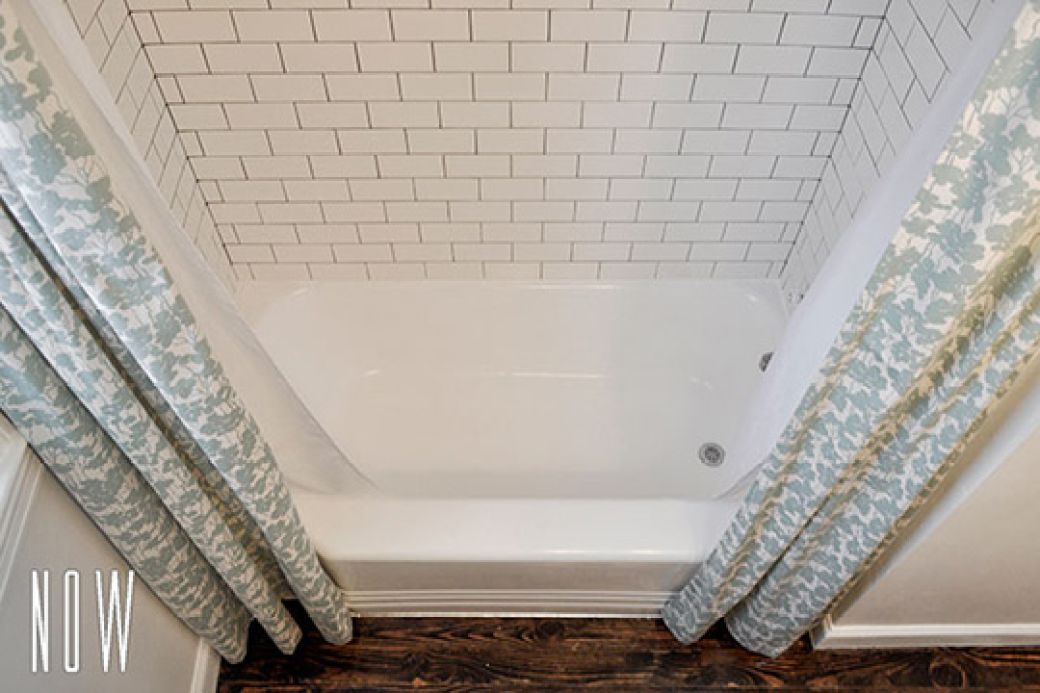To choose the right bathtub for your bathroom, start with the space. If all you’re doing is replacing an existing alcove tub, your options may be limited, but you can still opt for a deeper bath.
If you’re reconfiguring the space or adding a bathroom, you’ll have many options. Here’s what you need to know.
Types of Tubs
- Alcove: This bathtub is the most common style and has only one finished side. It’s made to fit into a typical three-sided alcove that’s about 5 feet wide and 30-36 inches from front to back. Often, it’s part of a tub-shower combination. Cost: $300 to $2,000.
- Drop-in: Supported on all sides by its rim, this tub might be inserted into a raised platform or installed below floor level. Cost: $800 to $2,000.
- Freestanding: This type of tub occupies a space all its own, often as a centerpiece of the bathroom. Clawfoot tubs or tubs with bases fit into this category, as do more stylized options such as copper soaking tubs. Cost: $2,000 to $6,000.
- Corner: These tubs are designed to fit into the corner of the bathroom and usually aren’t very spacious because of their triangular shape. More often than not, a corner tub is the only option for a small bathroom. Cost: $800 for basic model.
What’s It Made Of?
- Acrylic: About 90% of bathtubs sold are made of acrylic, with good reason. Acrylic is lightweight, which makes installation easy. Acrylic is resistant to chipping and cracking, and the non-staining, non-porous surface is easy to clean. Many color options are available.
- Fiberglass: Often acrylic tubs are reinforced with fiberglass, but gel-coated fiberglass is not as common as it was 15 years ago. It’s inexpensive, but it scratches easily and is impossible to repair if chipped.
- Cast iron: Porcelain-coated, cast-iron tubs are extremely durable and good at retaining heat, but they’re also more expensive than comparable acrylic tubs. They’re extremely heavy, too, which makes installation difficult (ask your remodeling contractor if your floors need structural reinforcement to support the weight). Porcelain enamel coatings offer the widest variety of color options among bathtubs, but chipped finishes are difficult to repair.
- Enameled steel: Generally made as a cheaper alternative to cast iron, allowing the look without the cost, these tubs chip more easily.
- Copper: Although an expensive option, copper tubs can be ideal if you’re looking for something to match Victorian or rustic décor. Keep in mind that copper scratches easily and the metal achieves a patina with age.
- Stone and wood: If you’re looking to make a unique statement in your bathroom, wood and stone tubs are the way to go. However, they’re extremely expensive and difficult to clean and maintain. Plus, a wood tub is going to be prone to rotting and warping.
Features For Your Tub
Surprisingly enough, jetted bathtubs are not the rage they once were. Deb Dumel, showroom manager with Frank Webb’s Bath Center in Boston, says that’s because home owners are trying to save money and recognize that tubs, compared to showers, get less use. If they have the extra cash for features, they tend to spend it on fancy shower heads and sprayers instead.
Still interested in bells and whistles? Here are a few currently on the market:
- Walk-in tubs are either freestanding or alcove type. They include a door that seals itself as the tub is filled, and have a built-in seat. These tall tubs are made to be used in the sitting position — not reclining -- and are ideal for those with limited mobility; $2,500-$6,000.
Learn more about adding accessibility and universal design features to your bathroom.
- Hydrotherapy includes soothing jets of water. The newest trend is the air bath, which emits tiny bubbles of air through small jets in the tub, providing a gentler overall body massage when compared to water-only jets. Hydrotherapy tubs run from $1,000 to $5,000, depending on the style.
- Chromotherapy is the addition of underwater lights that turn your bath water into a pool of blue, pink, or purple. The colors are supposed to help create a relaxing bathing environment. You’ll pay an extra $300-$800 for this option.
- Musical vibrations will tickle your fancy when you hook up your MP3 layer to sealed, waterproof speakers attached to the side of your tub. The acoustic bathing experience is yours as a $2,400 option.
Sizing Up Your Tub
Choosing a bathtub isn’t just about a soaking or jetted experience, and what kind of tub shape you consider fashionable. You also need a tub that suits your body -- and your water heater.
“Don’t get an oversized tub you don’t need,” advises Dumel, who says she’s seen too many people buy tubs too large for their water heater to handle effectively. Here’s a quick reference guide:
- A 40-50 gallon capacity tub requires a minimum 30-gallon water heater.
- A 50-75 gallon capacity tub requires a minimum 50-gallon water heater.
- A 75-gallon-plus tub requires a minimum 80-gallon water heater.
She’s also seen women 5 feet tall purchase gigantic tubs that don’t suit their frames.
Don’t be afraid to go into the bath store showroom and sit down in the tubs, advises Dumel. You do it for your mattresses; do it for your bathtub.
Related: Putting a Fresh Face on Your Old Tub
